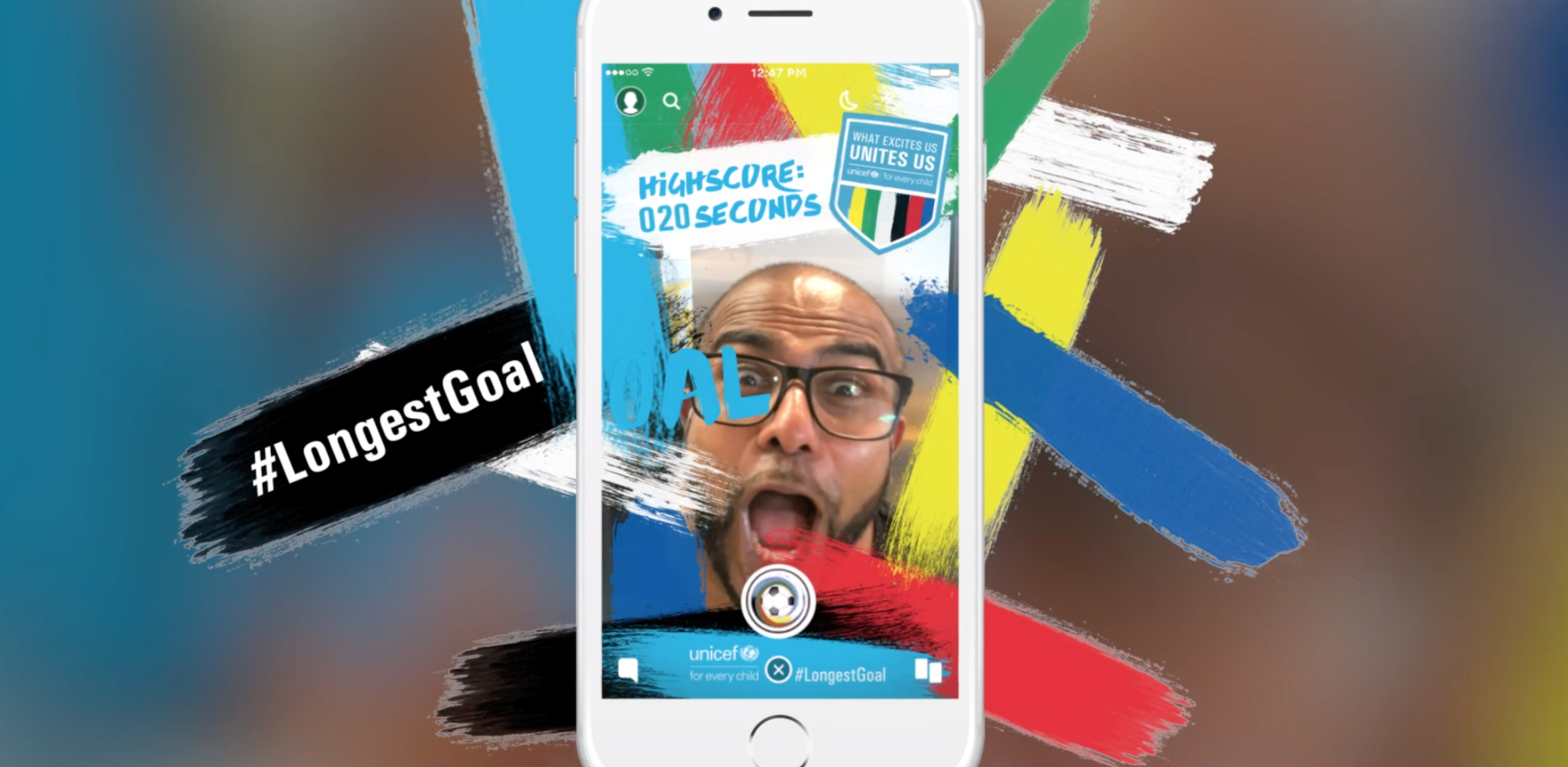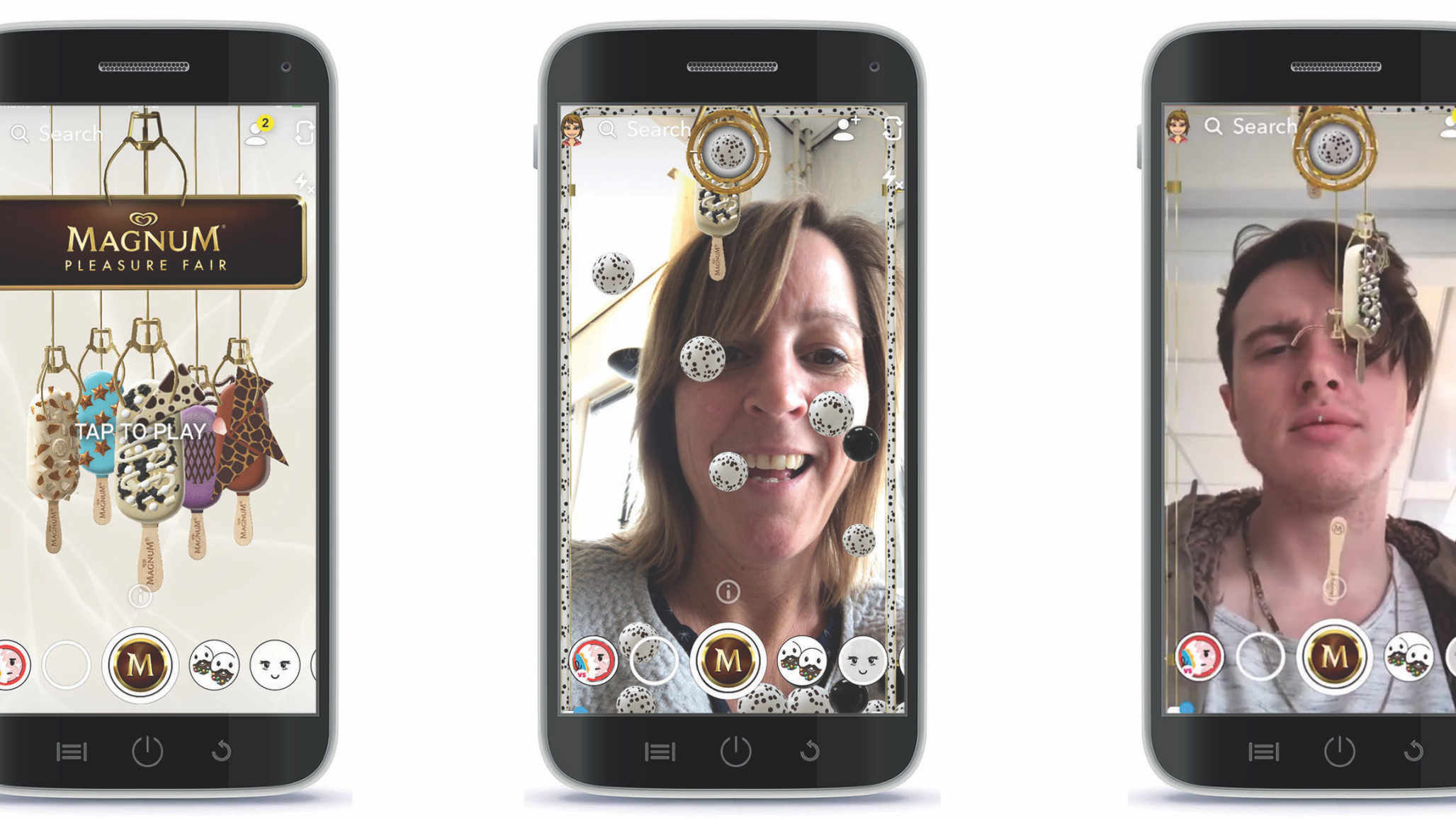Building Shared Experiences with Snapchat Games

At its Snap Partner Summit just weeks ago, Snapchat announced its Snap Games platform. A bit like Facebook’s Instant Games for Messenger, Snap Games are simple, HTML5-based experiences that users can instantly activate via chat. What makes the platform unique, though, is that its games seamlessly integrate into the chat platform, allowing users to continue talking to friends via text or audio as they play. The move signals the changing way that brands and users are approaching games: not just as a diversion, but as a means of connecting digitally with one another through shared experience.
“Friendship is more than just the things you chat about,” Head of Snap Games Will Wu explained to an audience at the summit. “Friendship is also about experiences you have together.” He went on to highlight the need for offering an environment for friends to get together and do more than just socialize—an idea that’s taken wind as people have come to view the popular game Fortnite as more than just a game but rather a hot, new social environment.
Today’s Gamer Isn’t Who You May Think They Are
The still-new platform isn’t yet open for everyone to develop, but brands and developers that are inspired by the sense of play can still provide gaming experiences in the platform. Take Snappables, for example, which are Snap-produced selfie lenses infused with game mechanics to make them more fun. While the Snappables moniker is reserved for lenses developed by Snap themselves, anyone can likewise make experiences of their own that are game-like.
We try to enhance ideas by taking them to the next level.
First, why support game-based AR lenses? The gaming population has changed surprisingly with the growing popularity of mobile gaming. While many assume the typical gamer is a boy under the age of 18, running the numbers challenges that notion: according to a report by the Entertainment Software Association, 45% of US gamers are women, and the average age for female gamers is 36. The average age of gaming males in 32.
Second, the social mobile environment is an easy fit for supporting modern gaming behaviors. According to the same ESA report, 42% of gamers play together with friends, while 36% play on a smartphone—equal to the percentage of gamers who play on dedicated game consoles.
Consumers Seek Value-Added Interactions
But for MediaMonks Senior Project Manager Tommy Lacoste, infusing an AR lens with game mechanics often just makes sense for providing a compelling interactive element without making the experience too complex. “People typically want to emulate flashy, cool AR experiences that they’ve seen elsewhere, but the experience must demonstrate brand value or fit the platform,” says Lacoste.
For example, our #LongestGoal Snapchat lens (made in collaboration with 180 LA for UNICEF to celebrate the World Cup) challenged users to scream “Goal!” for as long as possible. The longer they yelled, the higher their score—turning a key spectator behavior into an opportunity for friendly competition. The interaction perfectly fit the brand goal—in this case, highlighting a World Cup campaign.
As a Snapchat partner, MediaMonks helps brands zero in on ideas for captivating interactive experiences by offering several options to build on a brand’s idea. “We try to enhance ideas by taking them to the next level,” says Lacoste. But this can be tricky, as AR lenses for Snapchat and Facebook Camera alike are constrained to specific size limits. To squeeze the most value and functionality out of your experience, working with a creative and production partner who knows how to balance platform opportunities and limitations is key.
Selfie Lenses Go Beyond Face Masks
Gamified lenses that emulate Snap’s own Snappables series of games require quite a bit of ingenuity and creativity. “You don’t usually see much of this sort of thing with AR lenses, because it’s not necessarily the way they were originally intended,” says Lacoste. But adding in game mechanics doesn’t make a Snap lens heavier; instead, it requires technical understanding of what’s possible given advances in computer vision.
“With the Snapchat AR Developer Platform, we can detect where your head or parts of the body are,” says Lacoste. “From there, we can detect and measure interactions with virtual objects. So if we wanted the user to bounce a virtual ball on their head or nose, we can count that and keep score.” With these game-like interactions, selfie lenses go beyond being simple facial masks and encourages interactivity—and a reason to keep playing to get a high score.

Our recent Snapchat lens for ice-cream brand Magnum does this by challenging users to try to eat every Magnum bar floating around them before their screen fills with ice-cream, a bit like bobbing for apples. “Testing is crucial with these experiences,” says Lacoste. “First, you need to prototype and iterate the technical side of things. Second, you also must ensure the experience is fun…or funny for the user.”
That’s a good point: chomping at virtual ice-cream bars that dangle around you may be fun, but it’s also fun for others to watch. While a user may feel driven to share their high score, playing with the lens results in user-generated content that’s sure to get a laugh from friends. And that brings us back to our starting point: today’s consumer seeks out experiences they can enjoy among friends. Gamified AR selfie lenses offer an excellent opportunity for brands to provide simplified yet engaging moments to deliver on this demand.
Related
Thinking
Sharpen your edge in a world that won't wait
Sign up to get email updates with actionable insights, cutting-edge research and proven strategies.
Monks needs the contact information you provide to us to contact you about our products and services. You may unsubscribe from these communications at any time. For information on how to unsubscribe, as well as our privacy practices and commitment to protecting your privacy, please review our Privacy Policy.



